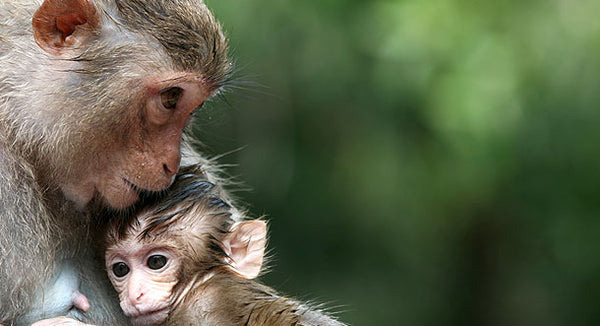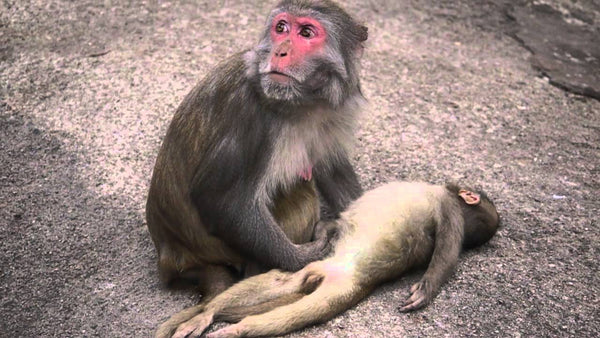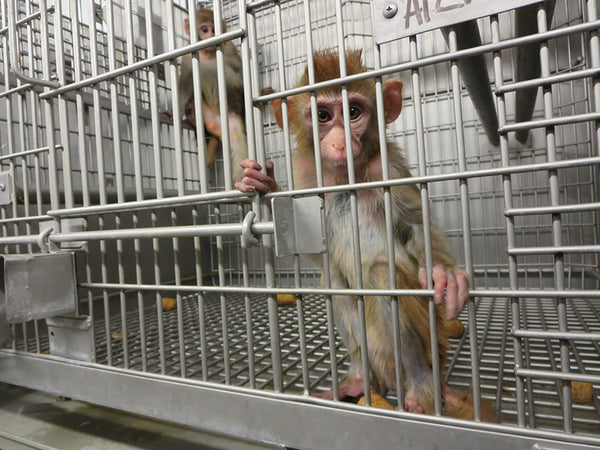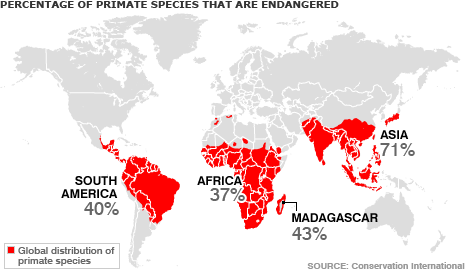Your Cart is Empty
Free Shipping on all Orders Over $50 in the US
Free Shipping on all Orders Over $50 in the US
Free Shipping on all Orders Over $50 in the US
February 07, 2016 3 min read
According to the Chinese zodiac, 2016 is the Year of the Red Fire Monkey. The Chinese Zodiac is based on a twelve year cycle, each year in that cycle related to an animal sign. Beginning on February the 8th, 2016, The Year of the Monkey will end on the 27th of January, 2017.

Sadly, monkeys are subjected to cruel experiments, entertainment, food, and loss of habitat. During this Year of the Monkey, we’re putting a spotlight on the complex social relationships and the many trials of these primates.
Like people, monkeys form strong friendships and bitter rivalries. They fight for each other and take care of one another. And the leader of a monkey troop, when overthrown, will even exhibit signs of depression – exhibiting many emotional similarities with our own.

Monkeys have a complex social system, and they form relationships with each other on an individual basis. When they encounter each other, monkeys will remember back to past interactions. Old rivals can be greeted with rage if they swing into the wrong part of the jungle.
Monkeys will also remember the help of a friend. Grooming, for example, shows affection and respect. And when it’s time for a fight, a monkey with whom you’ve built a friendship is much more likely to fight at your side — or clean your wounds afterward!

In Clever Monkeys, when the leader of a troop of toque macaques is killed, the others gather in silence around his body. As though they truly feel remorse, even his old rivals now seem to show their deference, tenderly touching their fallen leader.
Everyone is affected by death, but a monkey mother that has lost her infant seems especially hard-hit. In nearly all species of monkey, the mother will carry her child’s lifeless body around with her for days, suggesting that monkeys have trouble accepting death.
Monkeys suffer from stress, much like we do, and often it seems to relate to social problems. For example, baboon society is extremely competitive. Males who try to move up the social ladder and fail can suffer from high blood pressure and even ulcers. But those at the top don’t necessarily have it any better: high-ranking males who fall from power often exhibit signs of depression.
Their innate curiosity leads them to try new things, but it’s their culture — the passing of information from one generation to the next — that teaches them much of what they know. Their young learn by reaching out with their hands to experience the world around them, grasping new objects, slowly piecing together an understanding of their society. They learn from their families how to find food, communicate, recognize kin, even use tools, medicine, and language.

When a tourist got too close with her smartphone, this fascinated Japanese macaque snatched it away and even managed to set off the flash. The camera did not survive the underwater session that followed.
In French research, at least two baboons kept memorizing so many pictures – several thousand – that after three years researchers ran out of time before the baboons reached their limit. Researchers at the French National Center for Scientific Research figured they could memorize at least 10,000 and probably more.
Non-human primates (NPH) are used primarily because of their relative ease of handling, their fast reproductive cycle (compared to apes) and their psychological and physical similarity to humans. It is these same similarities that pose ethical problems because of an increased likelihood that primates experience pain and suffering in ways that are similar to humans.

Experimentation involving NHPs include toxicity testing for medical and non-medical substances; studies of infectious disease, such as HIV and hepatitis; neurological studies; behavior and cognition; reproduction; genetics; and the transplantation of living cells, tissues or organs from one species to another.
It is estimated that that between 100,000 and 200,000 non-human primates are used in research each year worldwide.
Monkey brains are eaten as a delicacy in parts of South Asia, Africa and China.
Monkeys are seriously threatened by habitat loss--especially those that live in tropical forests, a habitat that is quickly disappearing. Primate populations in Asia and particularly China are coming under increasing pressure from humans who hunt them for food, traditional medicine, for the pet trade and are destroying their natural habitat.

Comments will be approved before showing up.